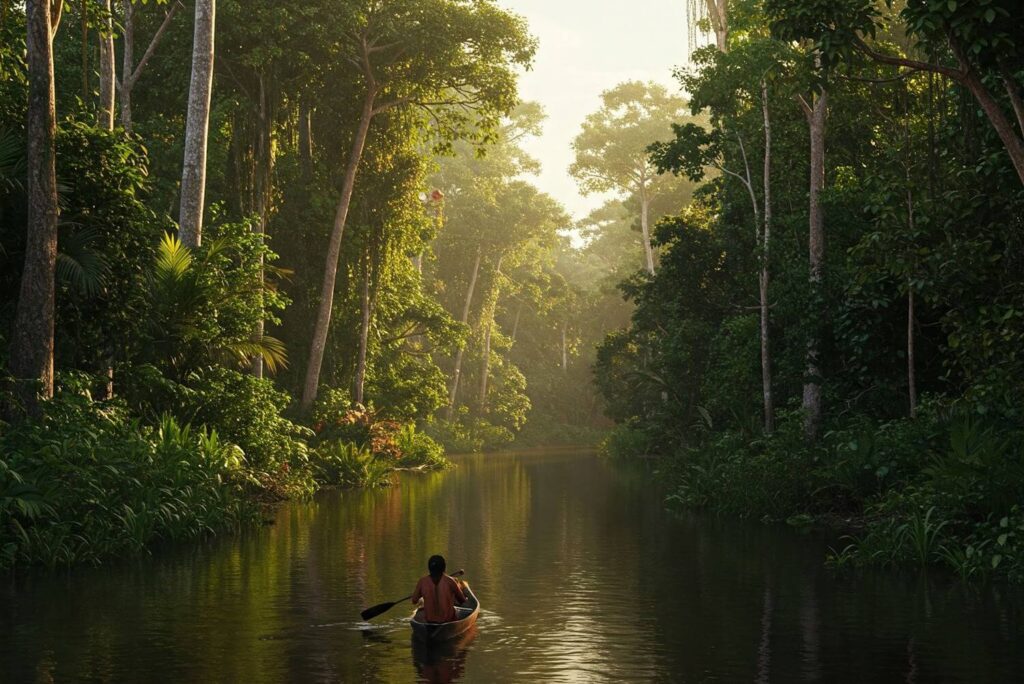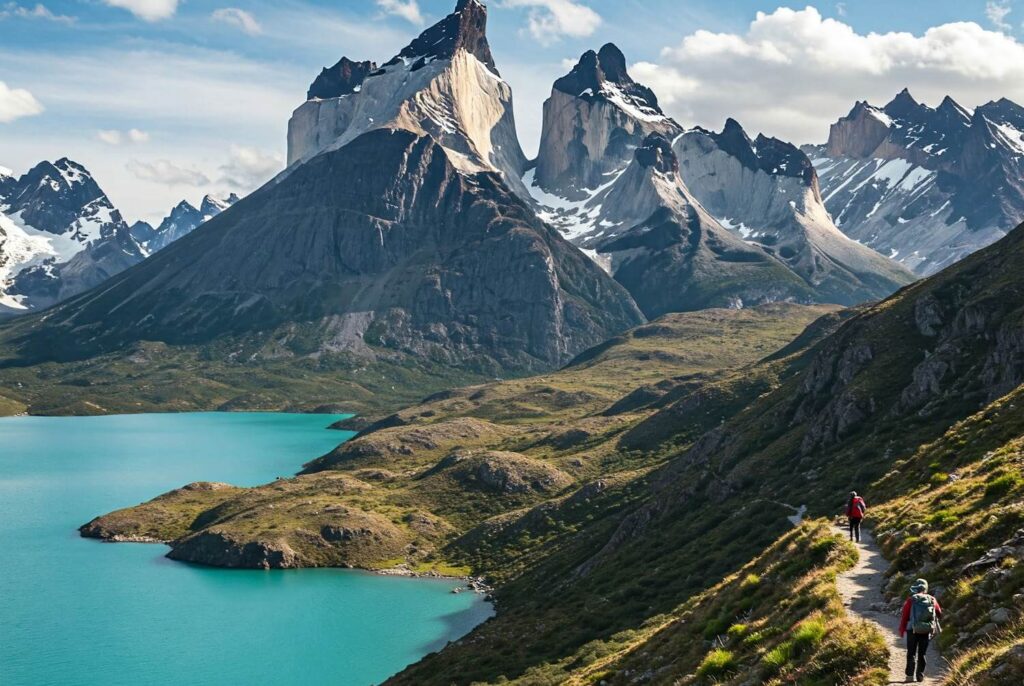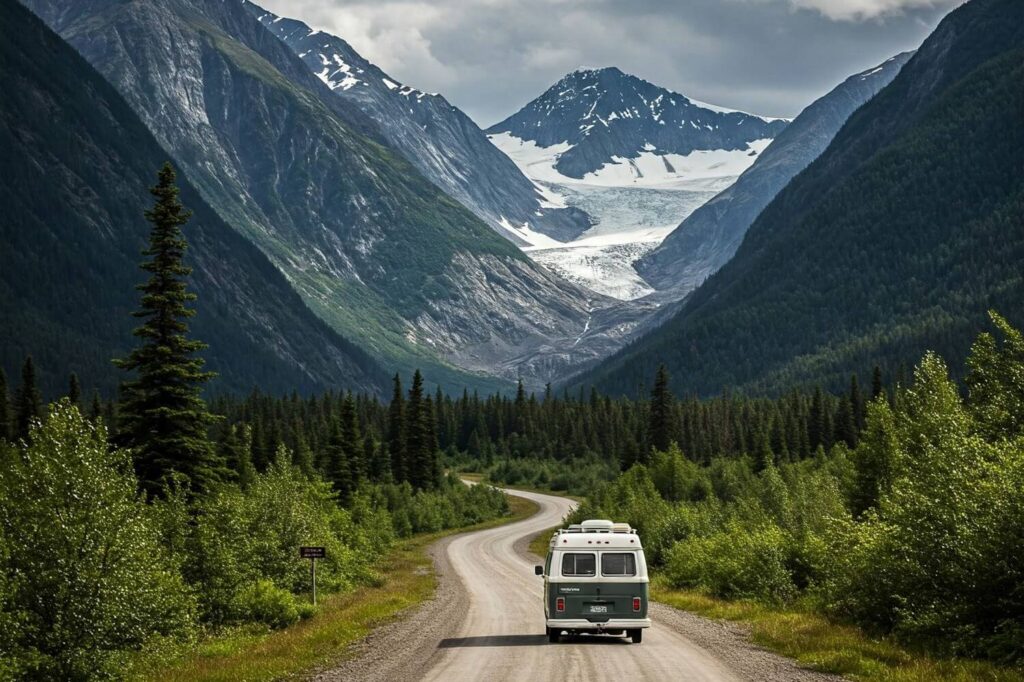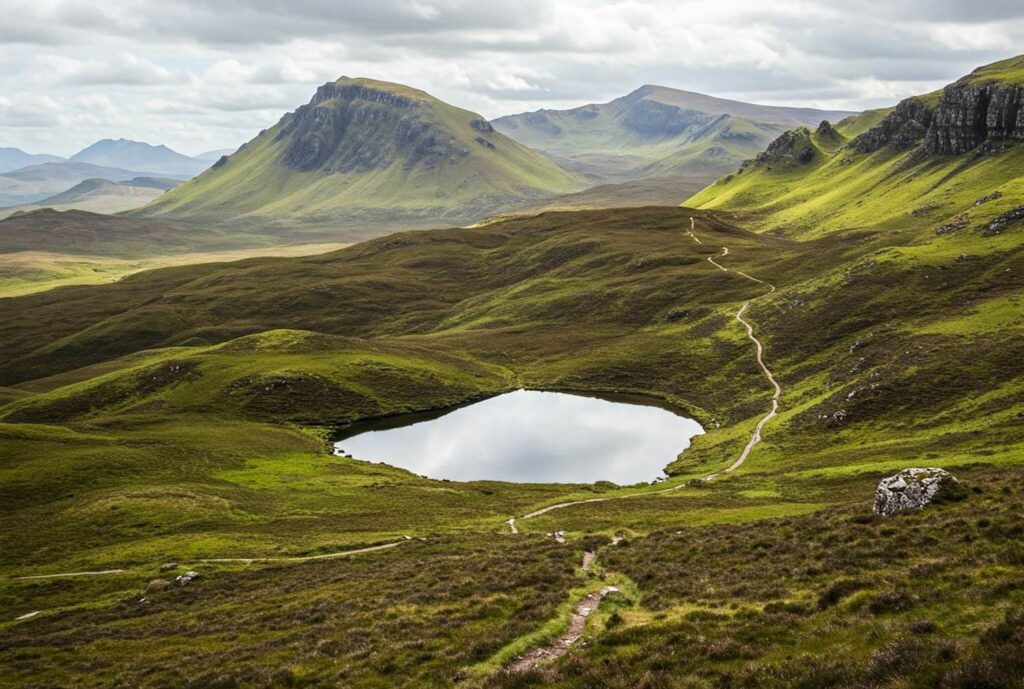Introduction to the Amazon Rainforest
The Amazon Rainforest stands as a monumental testament to nature’s diversity and resilience, representing the largest tropical rainforest on the planet. Spanning across several countries in South America, with Brazil holding a significant portion, the Amazon is an ecological treasure trove that plays a critical role in maintaining the Earth’s atmosphere. Often referred to as the “lungs of the Earth,” this astounding biome produces approximately 20% of the world’s oxygen, highlighting its importance not just locally but globally.
Biodiversity flourishes within the Amazon’s vast expanses, hosting an estimated 390 billion individual trees encompassing 16,000 different species. This extensive variety provides habitat for countless species of flora and fauna, including numerous endangered species. The intricate web of life found in the rainforest includes unique mammals, vibrant birds, reptiles, and countless insects, many of which are found nowhere else on Earth. Furthermore, the Amazon comprises various ecosystems such as riverine habitats, wetlands, and terra firme forests, each contributing uniquely to the resilience of the overall ecosystem.
The cultural significance of the Amazon is equally profound, home to hundreds of indigenous communities whose way of life is intricately linked to the rainforest. These communities have a wealth of knowledge about the medicinal properties of plants and the complexities of the ecosystems in which they have lived for millennia. Their perspectives offer invaluable insights into sustainable living and biodiversity conservation, making the Amazon not only a natural wonder but also a cultural heritage site.
Visiting the Amazon Rainforest offers travelers a chance to immerse themselves in a truly unique environment. The opportunity to witness the splendor of untouched nature while gaining a deeper understanding of its ecological importance makes this journey a once-in-a-lifetime experience that resonates with adventurers and conservationists alike.
Planning Your Amazon Adventure
Embarking on a journey to the Amazon Rainforest requires meticulous planning to ensure a fulfilling and safe experience. The first step in this process is determining the optimal time to visit. Generally, the dry season, which runs from June to October, is ideal for wildlife viewing, as animals are more easily spotted. However, the wet season from November to May also offers its own advantages, including lush vegetation and vibrant river activity. Understanding the fluctuation of weather conditions can greatly enhance your overall adventure in this biodiverse ecosystem.
Choosing the right tour operator is crucial when planning your Amazon expedition. Reputable operators will provide knowledgeable guides who are well-versed in local ecology and customs. They should also adhere to sustainable practices, minimizing the environmental impact of tourism. To ensure a memorable encounter, research various operators thoroughly, read reviews, and consider their commitment to responsible tourism. Selecting an operator that emphasizes community involvement will contribute positively to the local economy and preserve the cultural heritage of the region.
Health precautions are another critical aspect of your preparation. Travelers should consult a healthcare professional regarding vaccinations and medications, such as those for yellow fever, dengue, and malaria. Additionally, packing appropriate gear, including lightweight, breathable clothing, suitable footwear, and insect repellent, will enhance your comfort and safety during the expedition. Be sure to also prepare important travel documents, such as a valid passport and any required visas, to ensure smooth entry into the regions surrounding the rainforest.
Lastly, responsible tourism practices are essential for preserving the delicate Amazon ecosystem. Respect local customs, minimize waste, and adhere to guidelines provided by your tour operator. Your role as a conscientious traveler is vital in sustaining the natural beauty and biodiversity that the Amazon Rainforest offers.
Getting There: Transport Options
Traveling to the Amazon rainforest can be an adventure in itself, as it involves a combination of various transportation methods to reach the heart of this biodiverse region. The most common route begins with an international flight into major cities such as Manaus in Brazil or Iquitos in Peru. Both cities serve as gateways to the vast rainforest, offering multiple flight options from major capitals worldwide.
Once you arrive in Manaus or Iquitos, the journey to the jungle requires further planning. In Manaus, travelers often embark on boat trips along the Amazon River, which provide an authentic experience of the lush landscape and local culture. Regular riverboat services are available, ranging from budget options to more luxurious vessels. These boats can take you to various points within the rainforest and are an excellent way to see remote communities and wildlife.
From Iquitos, travelers can also opt for riverboat travel, which offers a unique opportunity to engage with the environment while enjoying stunning scenery. Additionally, flights from Iquitos to small jungle towns like Puerto Maldonado or Tabatinga allow visitors to access more remote areas quickly. These flights often cater to travelers looking to go deeper into the rainforest, where organized tours can be arranged.
For those preferring land transport, local buses and taxis can connect you to various starting points for hiking trails that lead into the rainforest. Popular trails often require guided tours, ensuring safety while navigating through the dense foliage. It’s essential to plan your route ahead of time and consider potential challenges related to weather and road conditions. Being prepared and considering all transport options will help ensure a smoother journey into this incredible ecosystem.
Wildlife Encounters: What You Might See
The Amazon Rainforest is renowned for its astonishing biodiversity, providing a habitat for an array of wildlife that captures the imagination of every nature enthusiast. Among the myriad species that inhabit this unique ecosystem, mammals, birds, reptiles, and insects stand out for their remarkable characteristics and behaviors. Visitors may encounter iconic creatures such as the jaguar, which is known for its stealth and strength, often observed lounging on the riverbanks or stealthily prowling through the underbrush. Other mammalian inhabitants include the capybara, the world’s largest rodent, and the playful pink river dolphin, both emblematic of the vibrant life that thrives within the forest’s waters.
Birdwatchers will find the Amazon equally thrilling, with over 1,300 species of birds gracing the skies. Colorful parrots, such as the scarlet macaw, demonstrate extraordinary intelligence and social behavior, while the elusive harpy eagle, one of the largest and most powerful raptors, showcases impressive hunting skills. Observing these birds in their natural habitat can be an unforgettable experience, especially during the early morning hours when their calls fill the air.
Reptiles also play a crucial role in the Amazon’s ecological tapestry. Spectacular species such as the green anaconda, often found basking in the sun, and the highly camouflaged green iguana might be spotted by diligent adventurers. Furthermore, an extensive variety of insects, including butterflies and beetles, reveal the remarkable adaptability and complexity of life in the rainforest, with some species displaying vibrant colors to serve as warnings to potential predators.
Understanding the necessity of wildlife conservation is key when exploring this delicate environment. Responsible observation is paramount to ensure that these extraordinary animals are not disturbed or put at risk. Establishing guidelines, such as maintaining a respectful distance and minimizing noise, contributes significantly to preserving their habitats while enabling visitors to appreciate and connect with the fascinating wildlife of the Amazon efficiently.
Exploring Amazonian Culture and Communities
The Amazon rainforest is not only renowned for its breathtaking biodiversity but also for the rich cultural heritage of its indigenous communities. These groups have inhabited the region for millennia, developing unique practices, languages, and crafts intricately linked to their environment. Each community reflects a deep understanding of the rainforest that goes beyond mere survival; it encompasses spiritual beliefs, sustainable living, and a collective identity shaped by the lush biodiversity around them.
When exploring Amazonian culture, one encounters a variety of languages spoken by different tribes, each carrying its own history and essence. These languages are not just communication tools; they hold within them the wisdom and traditions passed down through generations. Engaging with local languages and dialects can provide a profound insight into worldview perspectives that differ from more urbanized cultures.
Traditional crafts also hold significant importance within these communities. Artisans create intricate items ranging from woven baskets to hand-crafted jewelry using natural materials sourced from the rainforest. These crafts are not merely economic pursuits; they are expressions of cultural identity and stories that reflect the relationship between the people and their environment. By purchasing handcrafted goods, visitors not only gain authentic souvenirs but also support the local economies and initiatives seeking to sustain their way of life.
Interaction with local communities should always be approached with respect and intention. Sustainable tourism practices emphasize the importance of considering the social and environmental impact of our visits. Engaging in culturally sensitive ways—such as asking for permission before taking photographs, participating in traditional ceremonies, or learning about daily practices—contributes to a meaningful experience that honors the heritage and values of these indigenous populations.
The connection between Amazonian communities and the conservation of the rainforest is crucial. Indigenous practices often embody the principles of sustainability, as they possess an intrinsic understanding of the ecosystems they inhabit. Their knowledge, which has evolved through centuries, can play a pivotal role in preserving the delicate balance of the Amazon’s biodiversity for future generations.
Adventure Activities in the Amazon
The Amazon Rainforest offers a plethora of adventure activities that cater to thrill-seekers and nature enthusiasts alike. One of the most popular pursuits is hiking through the dense forest, where visitors can traverse well-marked trails or embark on guided excursions. These hikes provide an opportunity to witness the incredible diversity of flora and fauna that the Amazon is famous for, including exotic plants and imposing trees. Tourists should prepare by wearing appropriate footwear, carrying sufficient water, and following safety protocols to ensure an enjoyable experience.
Kayaking is another exhilarating way to explore the waterways of the Amazon. Paddling through the tranquil rivers allows adventurers to come face-to-face with the rich aquatic life, from playful river dolphins to vibrant fish species. Guided kayaking tours often provide valuable insights into the local ecosystem, alongside safety equipment to enhance the overall experience. It is essential for participants to have prior kayaking experience or to choose a guided tour that matches their skill level to guarantee safety while navigating the waterways.
Birdwatching enthusiasts will find the Amazon to be a true paradise, with over 1,300 bird species inhabiting the region. Special guided birdwatching tours are available for tourists, allowing them to spot remarkable species such as the harpy eagle and various toucans. Having binoculars and a field guide at hand will significantly enhance this experience. Additionally, engaging in night excursions reveals an entirely different side of the rainforest, as nocturnal creatures come to life, offering a thrilling adventure for those willing to explore the wilderness. Pre-trip preparation and adherence to safety guidelines during these nighttime outings are crucial for maintaining personal safety.
Participants should approach each activity with caution and respect for the environment to ensure both personal safety and the conservation of this vital ecosystem.
Survival Tips for the Amazon Rainforest
Venturing into the Amazon Rainforest presents a unique opportunity to experience one of the world’s most biodiverse environments. However, to ensure a safe and enjoyable journey, it is crucial to be well-prepared. The right gear can greatly enhance your survival in this challenging habitat. Start by packing high-quality, lightweight clothing that provides protection against both insects and the elements. Long-sleeved shirts, breathable pants, and sturdy waterproof boots are essential for warding off insect bites and navigating through muddy terrain.
The climate in the Amazon can be unpredictable, characterized by high humidity and sudden rainfall. Travelers should pack a reliable rain jacket and quick-drying gear to stay comfortable. Additionally, a durable backpack that is water-resistant will help keep your belongings dry and organized throughout your trek.
Insect protection is another vital consideration. Mosquitoes, which can carry diseases such as malaria and dengue fever, are prevalent in the rainforest. Applying an effective insect repellent containing DEET to exposed skin and wearing mosquito netting for camping can significantly reduce your risk of bites. It is also beneficial to consult with a healthcare provider about vaccinations and preventative medications prior to your journey.
While exploring the lush surroundings, knowledge of local flora and fauna can be immensely useful. Familiarize yourself with the plants that are beneficial, such as certain roots and fruits that can be consumed, as well as the endangered species that could pose dangers. In addition, understanding animal behavior, especially that of snakes and insects, can prevent harmful encounters. Establishing respect for the natural environment and its inhabitants will enhance your experience, allowing for a deeper connection with this magnificent ecosystem.
Environmental Concerns: The Amazon at Risk
The Amazon Rainforest, often referred to as the “lungs of the Earth,” faces significant environmental challenges that threaten its intricate ecosystems. One of the foremost issues is deforestation, driven primarily by agricultural expansion, logging, and infrastructure development. An alarming rate of forest is cleared each year, leading to the loss of biodiversity and the displacement of numerous species. Deforestation not only disrupts the habitats of countless organisms but also contributes to the exacerbation of climate change, as the trees that sequester carbon dioxide are removed from the ecosystem.
Climate change itself poses a major risk to the Amazon. Rising temperatures are altering rainfall patterns, which can lead to droughts and affect the overall health of the rainforest. Such climatic alterations increase the susceptibility of trees and vegetation to pests and diseases, further weakening the forest’s resilience. The impact of climate change extends beyond the Amazon as well, influencing global weather systems and biodiversity in far-flung regions.
Illegal activities exacerbate these challenges. Unauthorized logging, mining, and land grabbing by individuals or companies not only degrade the environment but also violate the rights of local indigenous communities. These communities play a crucial role in the preservation of the rainforest and its resources; thus, their involvement in conservation efforts is essential. Tourists can support these causes by choosing eco-friendly travel options and participating in initiatives aimed at protecting the environment. Also, raising awareness about these pressing issues can help galvanize action towards sustainable practices both in the region and globally.
The urgency of conservation efforts cannot be overstated. Visitors to the Amazon have a unique opportunity to engage with its beauty while promoting initiatives that protect its fragile ecosystems. By understanding the environmental concerns facing the Amazon Rainforest, travelers can make informed decisions that contribute positively to its preservation.
Conclusion: Embracing the Amazon Experience
The Amazon Rainforest stands as one of the most biodiverse and enchanting ecosystems on our planet. Visiting this vast natural wonder can be a transformative experience, altering one’s perspective on life, nature, and conservation. As travelers venture through the lush greenery, they engage not only with the incredible wildlife and plant species but also with local cultures that have thrived in harmony with the forest for centuries. Such encounters can impart invaluable lessons about sustainability, respect for nature, and the interconnection of all living things.
Returning from an expedition in the Amazon, many visitors find themselves deeply moved by the profound beauty and complexity of this region. The sights and sounds of the rainforest—its symphony of birds, the rustling of leaves, and the vibrant colors of flora—often linger in one’s memory long after the journey concludes. This unique immersion allows travelers to grasp the importance of preserving such environments, prompting them to reflect on the impact of humanity on the natural world. The realization that the Amazon Rainforest is facing significant threats from deforestation, climate change, and habitat loss makes the experience even more poignant.
To embrace the Amazon experience fully, it is essential for visitors to become advocates for the rainforest’s preservation. By sharing their stories, insights, and photographs with friends, family, and social media networks, travelers can inspire others to appreciate and protect this vital ecosystem. Additionally, supporting sustainable tourism initiatives and conservation organizations can contribute to the ongoing efforts to conserve the Amazon. A trip to the Amazon is not merely a vacation; it is a call to action, urging individuals to recognize and champion the significance of one of our planet’s most extraordinary treasures.





